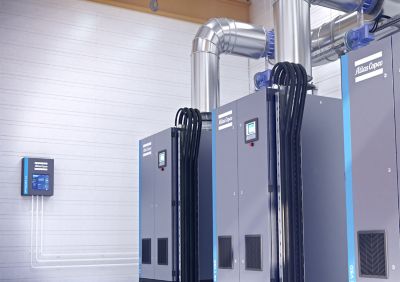Moc elektryczna
In order to turn air into compressed air, you need power. This power comes in the form of electricity. Here we will learn about the three types of electric power: active, reactive and apparent power. We will also take a look at the power factor.
What is active, reactive and apparent power?
The relationship between active, reactive and apparent power is usually illustrated by a power triangle.
What is the Power Factor?
The phase angle expresses the degree to which current and voltage are out of phase. A quantity known as the Power Factor (PF) is equal to cos φ. Many power utilities apply a penalty to their consumers for applications with a low, lagging Power Factor. This is because the electric distribution, transmission and generating equipment must be substantially oversized to accommodate the apparent power (sum of active and reactive power and of heat losses), while consumers are billed based on kWh (kilowatt hour) consumption registering active power only. Power Factor improvements often result in substantial cost savings. The PF can be improved by reducing the reactive power by:
- Using high PF equipment: lighting ballasts
- Using synchronous motors operated at leading PF at constant load
- Using PF improvement capacitors
Related articles
An Introduction to Electricity
1 lutego, 2022
Learn about the basics of electricity and the role it plays in the compression of air. Some basic terminology and definitions.
Silnik elektryczny
16 marca, 2023
Dowiedz się o podstawach silników elektrycznych i ich dopasowaniu do współczesnych sprężarek.


